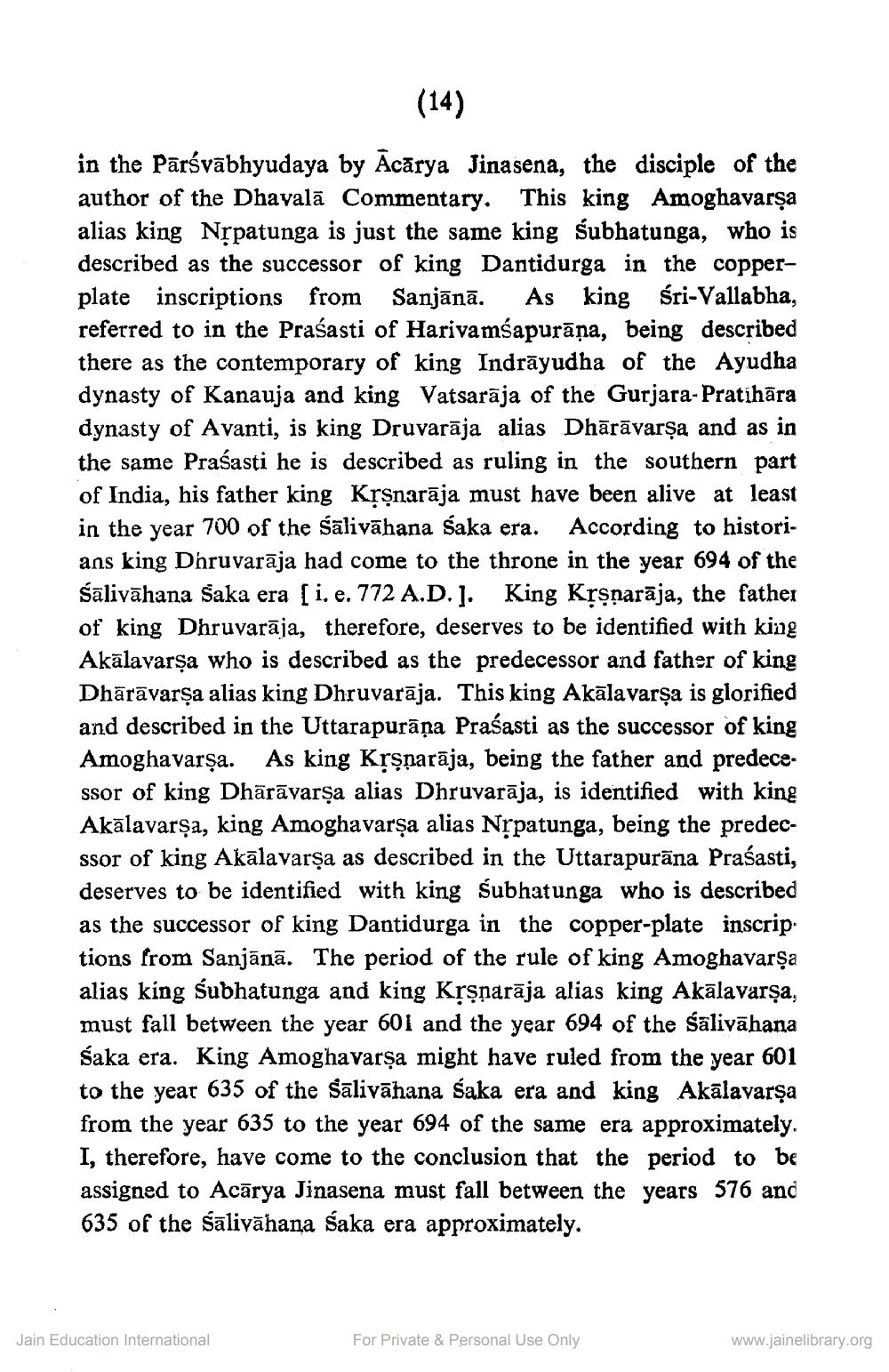________________
(14)
in the Pārsvābhyudaya by Acārya Jinasena, the disciple of the author of the Dhavalā Commentary. This king Amoghavarşa alias king Nộpatunga is just the same king śubhatunga, who is described as the successor of king Dantidurga in the copperplate inscriptions from Sanjānā. As king śri-Vallabha, referred to in the Praśasti of Harivamśapurāņa, being described there as the contemporary of king Indrāyudha of the Ayudha dynasty of Kanauja and king Vatsarāja of the Gurjara-Pratihāra dynasty of Avanti, is king Druvarāja alias Dhārāvarşa and as in the same Praśasti he is described as ruling in the southern part of India, his father king Kșşnarāja must have been alive at least in the year 700 of the śālivāhana saka era. According to historians king Dhruvarāja had come to the throne in the year 694 of the śālivāhana Saka era si. e. 772 A.D.). King Kșsnarāja, the father of king Dhruvarāja, therefore, deserves to be identified with king Akālavarşa who is described as the predecessor and father of king Dhārāvarşa alias king Dhruvarāja. This king Akālavarşa is glorified and described in the Uttarapurāņa Prasasti as the successor of king Amoghavarşa. As king Krşnarāja, being the father and predecessor of king Dhārāvarşa alias Dhruvarāja, is identified with king Akālavarşa, king Amoghavarşa alias Nịpatunga, being the predecssor of king Akalavarşa as described in the Uttarapurāna Prasasti, deserves to be identified with king śubhatunga who is described as the successor of king Dantidurga in the copper-plate inscrip tions from Sanjānā. The period of the rule of king Amoghavarşa alias king śubhatunga and king Krşparāja alias king Akālavarşa, must fall between the year 601 and the year 694 of the śālivāhana Śaka era. King Amoghavarşa might have ruled from the year 601 to the year 635 of the Sālivāhana saka era and king Akālavarşa from the year 635 to the year 694 of the same era approximately. I, therefore, have come to the conclusion that the period to be assigned to Acārya Jinasena must fall between the years 576 and 635 of the śālivāhana saka era approximately.
Jain Education International
For Private & Personal Use Only
www.jainelibrary.org




